For most of the past decade or so that EVs have been entering the mainstream, Tesla drivers have enjoyed a number of key advantages over drivers of competing models like the Nissan Leaf, Chevy Bolt and others. For instance, Tesla cars have long enjoyed greater range, with models in 2022 still outdoing the second-generation models of competing EVs that have had years to catch up.
One other key advantage over competitors is that of charging ability, and that’s what we want to cover in today’s blog. You could be driving down the highway in any electric vehicle, thinking that a charging spot was coming up, only to then notice that it was a Tesla Supercharger station, thus ruling you out as a user. Tesla drivers, on the other hand, can use their J1772 adapter to plug into any old charging point they want, as well as the Tesla-exclusive ones.
But is all that changing now? Tesla has talked about opening up their network to non-Tesla models, but how far along are they? In particular, we want to look at whether the now very popular Volkswagen ID series of electric vehicles can take advantage of this impressive charging network.
Can VW ID Models Use Tesla Superchargers?
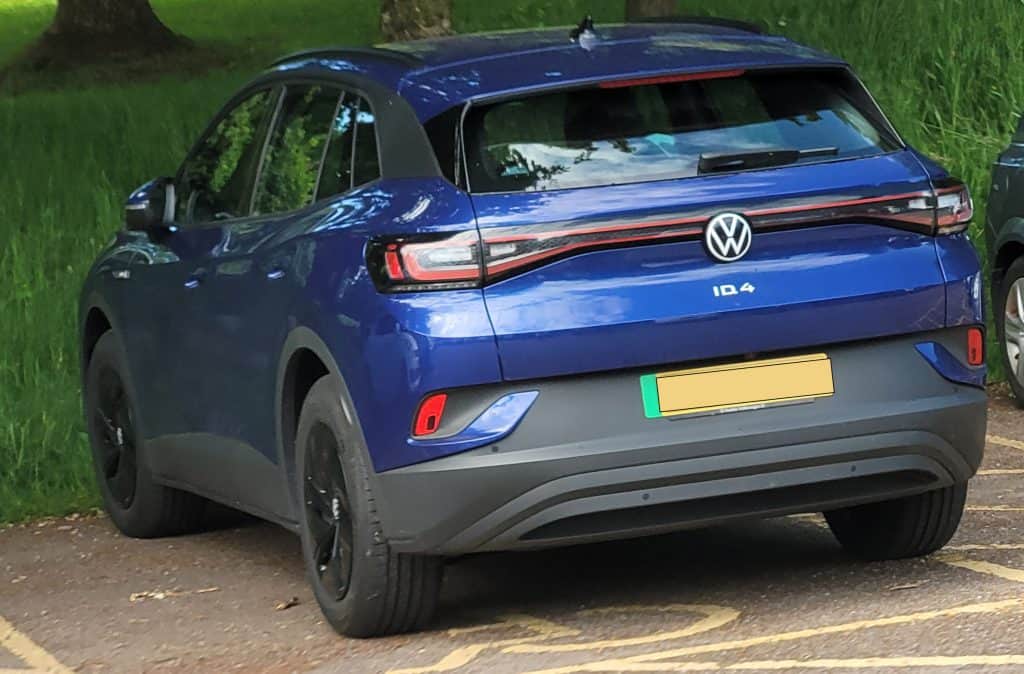
Back in July of this year, The Verge reported that Tesla plans to open up its Supercharger network to other electric car models in the US “later this year.” It’s already later in the year 2022 at the time of writing, so has this been achieved yet?
If you are a US driver of a VW ID.4 electric SUV, then the bad news is that, at the time of writing at least, you are still unable to use a Tesla Supercharger. The story is a bit different in Europe, however.
Tesla Supercharger Pilot Scheme in Europe
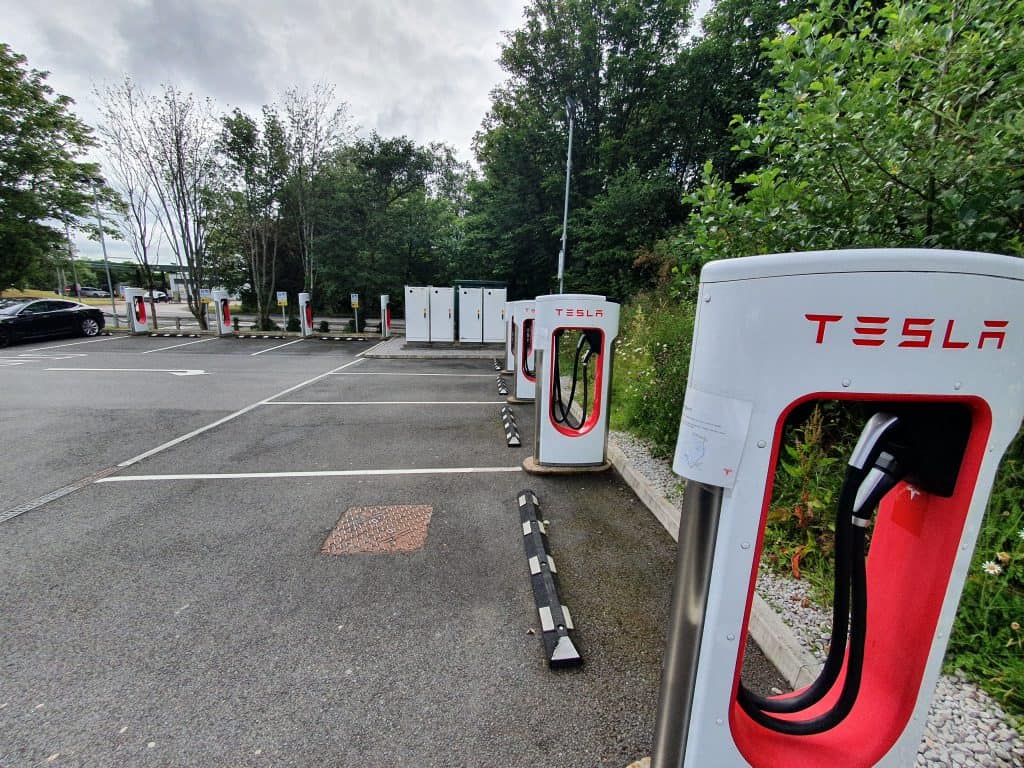
Tesla actually opened its pilot scheme of opening up its Supercharger stations to non-Tesla drivers back in November 2021. It’s now available in 14 different countries across the continent, including:
- The Netherlands
- France
- Norway
- Germany
- The UK
- Spain
- Sweden
- Belgium
- Austria
- Denmark
- Finland
- Luxembourg
- Switzerland
- Iceland
While not every single Tesla Supercharging site in these territories is open to non-Tesla drivers, numbers are growing as Tesla continues to commit to the expansion of the scheme. The main reason for Tesla not simply rolling it out immediately across Europe and the US is that they are carefully observing the impact of other EV owners becoming customers at their stations.
Opening up does inevitably mean more congestion, for instance, which could have a marked effect on the overall customer experience.
But why is Europe lucky enough to get access to this scheme? Why can drivers of the Volkswagen ID.3, ID.4 and other models take advantage of these Supercharger stations, but not drivers of ID series models in the American market? Tesla is an American company, is it not?
Charger Connectors
The main advantage of Europe is the greater uniformity and faster adoption of the new Combined Charging System (CCS) connectors. Whereas in the US, Tesla drivers use a Tesla-exclusive DC fast charger connector, those in Europe made after 2019 all now conform to the CCS standard, which makes such a pilot scheme possible in Europe.
Supercharger sites often feature units with two cables now, with older models serviced by the traditional Tesla connector where needed.
It also means that even in Europe, those who are not using a CCS charger, such as those driving older Nissan Leaf models for instance and who are still using the CHAdeMO system, can’t take advantage of this Supercharger access.
How Do Volkswagen ID Drivers Use the Tesla Supercharger Network in Europe?
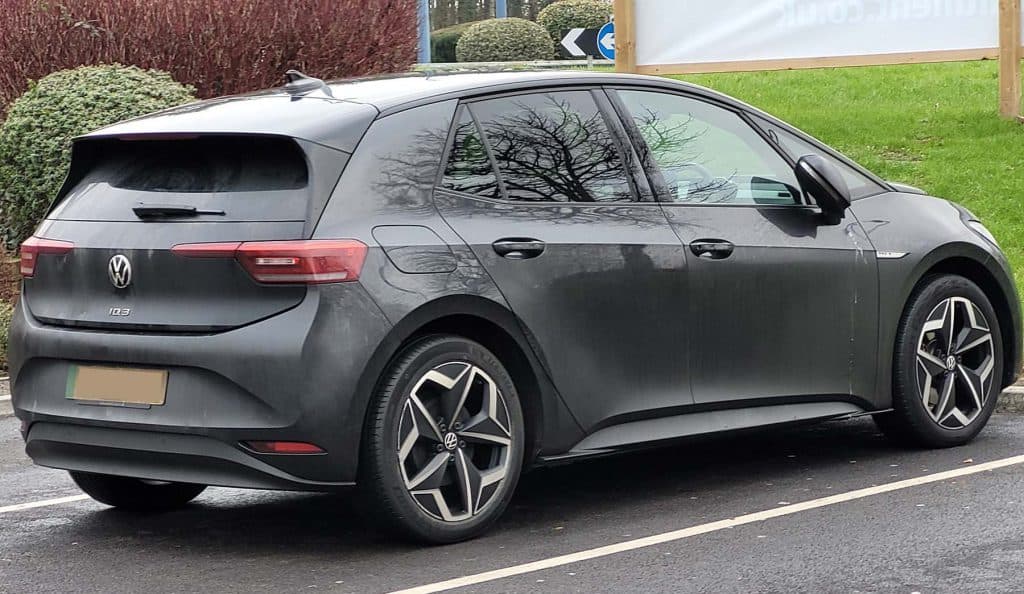
So, we’ve established that it’s technically possible and easier for European drivers of the ID.4 and ID.Buzz models to access Supercharger stations because of their CCS connectors. But is that the entire story?
The first thing is to be sure of the location of your nearest valid Tesla Supercharger site. You then have to be able to interface with the chargers and pay for the option. To do this, users simply have to download the Tesla app and create a Tesla account. Users in Europe now have an option to “Charge Your Non-Tesla.” Provided they are CCS compatible, they can get started.
So, VW drivers in Europe can indeed enjoy the additional benefits of much of the Supercharger network, but not all of it.
Costs
Non-Tesla cars pay rates that are slightly higher than Tesla drivers, but these can be brought down with a charging membership package. There is no continent-wide standard, with prices varying per site.
The specific pricing will appear on the app as you are connecting to the charger and preparing to start the charging process, although the price is often a bit lower than some non-Tesla rapid DC stations that often charge a high kWh price.
Didn’t I See in the News That Tesla Has Launched This Option in the US?
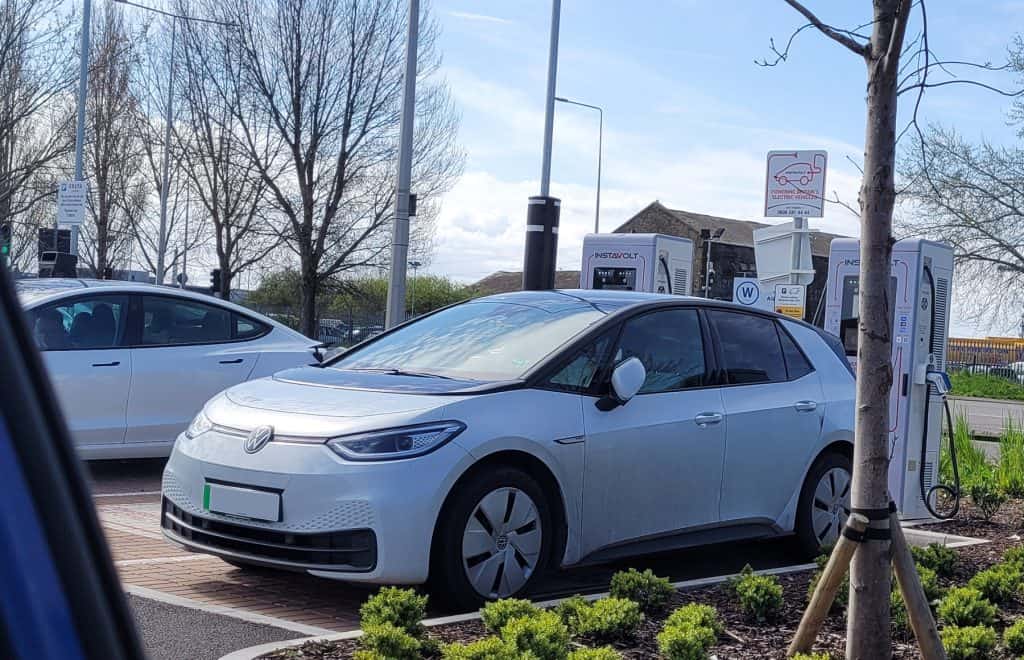
The short answer is yes, you did. The long answer, unfortunately, is that it appears to have been the result of a mistaken sort of “pseudo-launch” from Tesla. On August 17, 2022, Inside EVs reported the faux launch, citing the tweets of investor and eco-friendly clothing brand owner Sawyer Merritt.
Merritt tweeted on his account in “BREAKING” news that Tesla had officially launched a Supercharger membership package for non-Tesla owners. EV drivers without a Tesla badge could either pay per use, or opt for the $0.99 monthly rate, which deeply undercut the $4 monthly rate for Electrify America. The main caveat was that an individual subscription was needed for every individual Tesla account, and charges were limited to 5 per day.
Most people would likely agree that for a tariff that small, and the now hugely increased access to local DC fast charging options, would be worth those conditions, and probably something even stricter than that. Merritt himself signed up and was even told from which date his billing would begin.
So what happened next? Why was this news not about how Volkswagen ID.4 and other ID model drivers in the US can finally now take advantage of Tesla Supercharger infrastructure?
Tesla Hits ‘Undo’
On the same day, Merritt tweeted an update that showed that Tesla was no longer offering this package. He even offered his own theory on what might be going on at Tesla HQ:
“My guess is they accidentally hit publish prematurely or they mistakenly put $0.99/month instead of $9.99/month. I guess we’ll see.”
Sawyer Merritt; August 17,2022, Twitter
The latest reported by Inside EVs is that the US government and Tesla have some kind of plan in place to roll out the scheme in the US from the end of this year. This leaves many questions unanswered, most importantly the question of which areas will open up first, and which brands of cars will be able to use the Superchargers?
Will it be based on a charger connector like it is in Europe? Will certain brands be given “preferred” status? Will brand influence the amount charged by Tesla? It’s unfortunate that even now as the fall encloses across the country that we still don’t have answers on this.
American VW ID.4 and other ID model owners can at least take comfort in the knowledge that the European scheme has been largely successful and has seen many more Supercharger centers opening up across the continent — 14 countries and counting, including all the biggest economies in Europe.
Stay patient, VW owners in the US. Your time will come. In the meantime, you can still charge your VW ID vehicle using Tesla destination chargers and home charging solutions. It’s only the Supercharger network that isn’t yet open to these cars (and others).
How Fast Will a Tesla Supercharger Charge a VW ID.4?
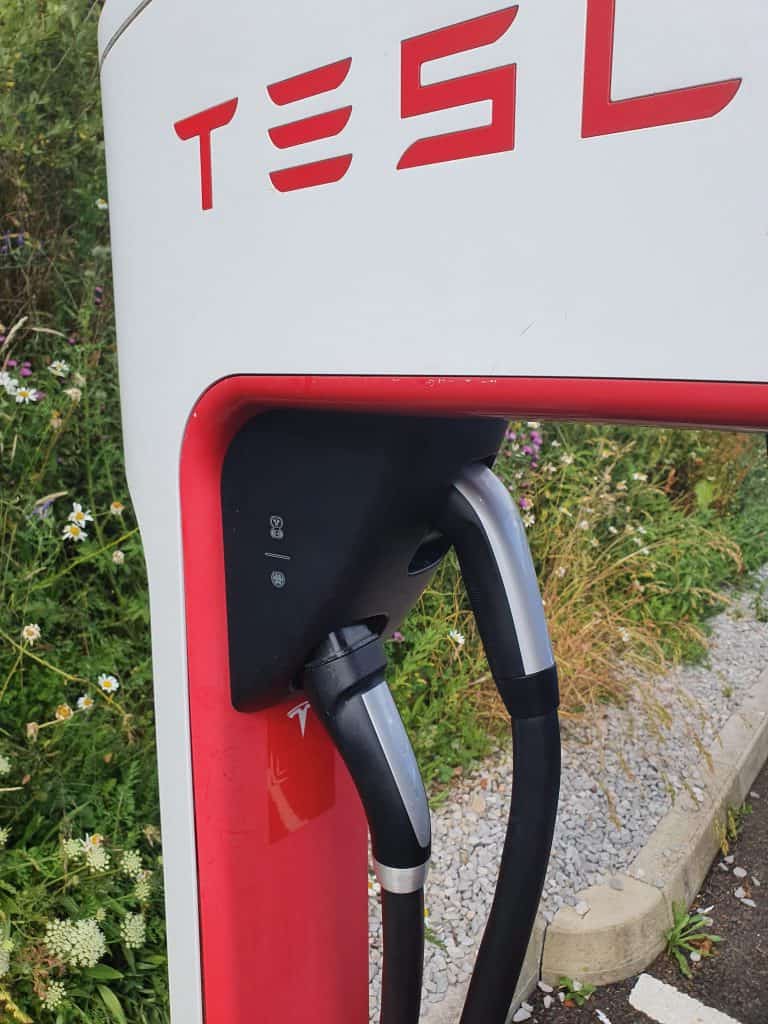
The Volkswagen ID.4 has been very successful in the US, even though the American market didn’t get access first to the smaller ID.3, which was important for hooking brand fans in the European and other markets. If and when American owners do get access to Superchargers, what kind of charging times can they expect?
Tesla Superchargers supply power at maximums of 72, 150, or 250 kW. The VW ID.4 is built to take up to 125 kW, but has been observed by Inside EVs to be able to reach 131 kW. That being the case, it can use the first two settings of Supercharger settings, and is commonly charged up by owners already at 150-kW Electrify America DC charging units.
When Inside EVs tested the charging speed at this power level, they found when charging the car’s 82-kWh battery (77 kWh usable) from 0 to 100 percent:
- After 20 minutes, the battery reached 50 percent charge
- After 40 minutes, the ID.4 reaches 80 percent charge
- After 45 minutes, it reached 85 percent charge
- After 60 minutes, it reached 97 percent charge
For most drivers trying to maintain a charge between 20 and 80 percent, therefore, they should expect a 150-kW Tesla Supercharger to take them from 20 to 80 percent in around 20-25 minutes in total.